SAND RIDGE NATIONAL REGISTERED ROUND CHURCH "WHEEL OF LIFE" - Devil Has No Corner To Hide
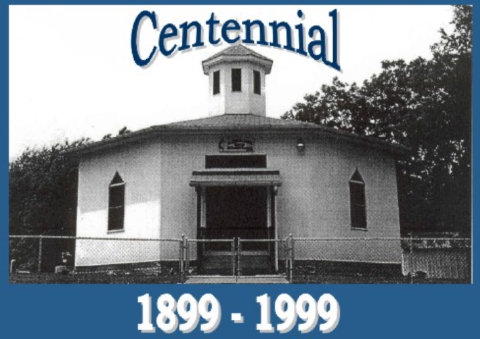
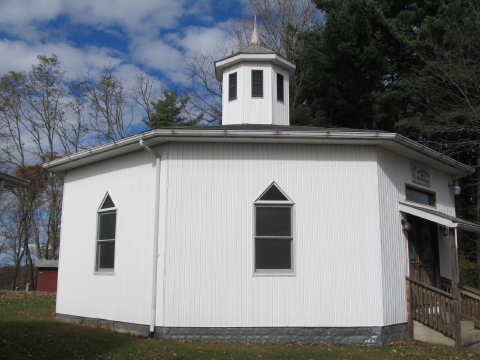
Old and new photos of the Sand Ridge Albert's Chapel church, the wheel-shape "round" church is related to life being a cycle, that each individual sowed good seed or bad, and as the wheel of life turned, each would come back to the place of sowing to reap the harvest, while the other concept was that "The devil can't find a place to hide."
Alberts Chapel is an unusual octagonal Methodist church at Sand Ridge, the county's only building on the National Historical Register.
Built in the Carpenter Gothic-style, the simple, sparingly ornamented church rises to an octagonal cupola, with lancet windows and board-and-batten siding, built in 1899 under the direction of Albert Poling by his uncle Charles Poling with materials provided by his brothers Asbury and Wesley Poling.
The octagonal design suggests that the form was chosen "so that the devil couldn't corner you in or hide in the corner." The structure was restored in 2004.
In 2013, the church has stood the test of time for 114 years. While the membership of the church has diminished, it still has an active congregation, the current pastor Rev. David Weaver, whose roots go back to the Poling family, the builders.
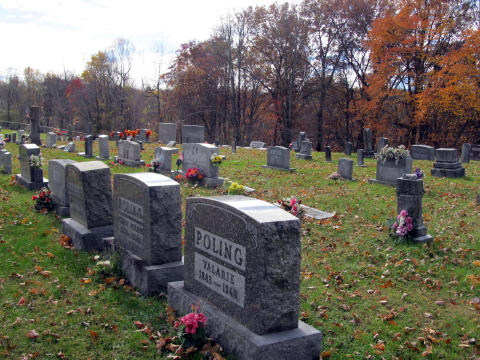
Expansive cemetery is adjacent the church, wherein resides
many members of the congregation, including the Polings
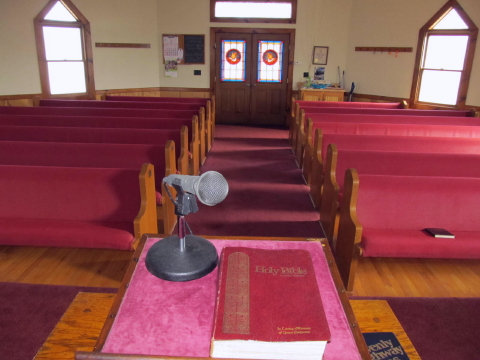
The church was renovated after it was
placed on the National Historic Register
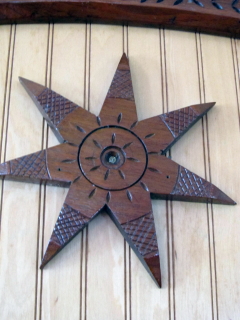
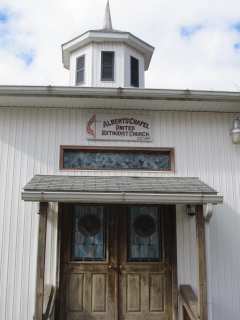
Late pastor Glendon McKee said the seven-pointed star (left)
placed in the chapel at dedication was known as "The Mystic
Star," an emblem of "the seven Gifts of the Holy Spirit"
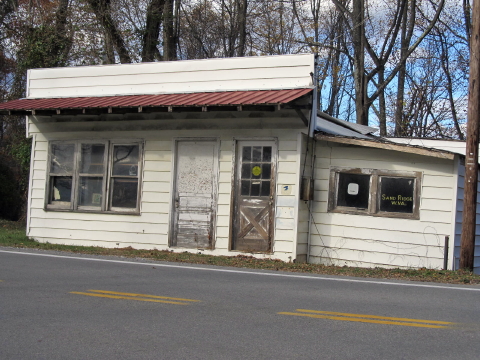
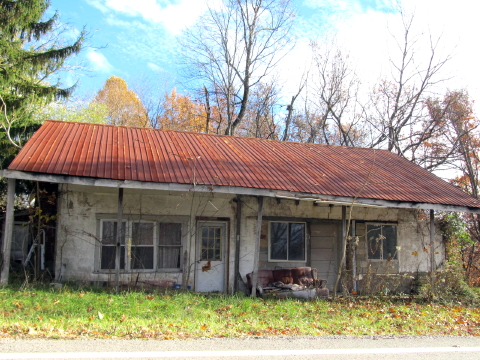
The Sand Ridge Community, which rests on the edge of the Bear Fork wilderness, once had four stores, shown (top) Dick Altizer's store (the post office) which was in operation about 50 years, and the Roy Bush/Dwight Wilson store nearby, both closed for many years
Sand Ridge was a community that the half-runner green bean rose to prominence in the United States, thanks to Euna Poling Hall. (Bob Weaver)
By Boyd Stutler(1932) The West Virginia Review
Styles in church architecture vary in several sections of West Virginia, but there is only one community in the state that has a round church. That is the Sand Ridge community in Calhoun County, which is located midway between Spencer and Glenville on highway 33/119.
Strictly speaking, it is not a round church at all, but is octagonal in shape. It has sharply defined corners at each of its eight sides instead of the continuous curve that is present in a truly rounded structure, but no one ever refers to it as octagonal.
It is almost invariably called, "the Little Round Church." The term "little" is also a misnomer as it is of the average size of a rural church.
Completion of the hard surfaced highway through the community, which directed an almost continuous stream of traffic past the door of the church, has brought the structure into a prominence never dreamed of by its planners and builders.
Its prominent position high on the crest of one of Calhoun's lofty hills is such a setting that attracts the attention of the passer-by. Hundreds and thousands now pause to examine the church and to comment on the peculiar style of construction. Round barns have been built in several communities, but a round church is something new under the sun.
The building is of comparatively recent construction. It was built for service and to express a definite idea rather than as a curiosity to attract the attention of passing strangers.
Thirty years ago, the people of the Sand Ridge community decided they needed a church building. The section was sparsely settled. A little flock of members of the Methodist Episcopal Church had held together, meeting for worship at irregular intervals at the nearest house. The need was great, the laborers few, and the money scarce, but the faithful few found a way to obtain a comfortable church.
The district conference became interested in the movement and sought to help in any way it could. They decided to establish a building committee whose duty it would be to find the ways and means.
After a survey of the field, Albert Poling, one of the active and zealous younger workers in the community, was named as the single member of the committee.
The site was selected and the land for the church and cemetery purpose was given by the father and brother of the committee of one--Wesley and Asbury Poling--men whose given names would stamp them as coming from a family in which the names of the founders of Methodism were revered and honored.
The committee man called upon those interested to go with him into the woods, cut the trees, shape them for sawing, and then convert the logs into lumber. A great part of the labor of preparing the lumber and of actual construction of the church itself was given freely by volunteers. Much of the necessary cash outlay was borne by members of the Poling family.
In recognition of the services of Albert Poling, the church was dedicated and consecrated under the name of Albert's Chapel. Though this name is still borne on the church records, it is rarely called Albert's Chapel. Even in the section contiguous to the Sand Ridge community it is known as the Sand Ridge Church, or as the Round Church.
The church grew and prospered and has grown under the guidance of Rev. Paul Maness, the present pastor, to be one of the best churches in the Mt. Zion circuit. It now has nearly 100 members and maintains a Sunday school with an enrollment greater than the membership of the church.
Because of the extent of the circuit and the number of churches under his care, the pastor visits the church but twice each month.
Many stories have been told as to the reason for constructing the church in its odd octagonal shape. One that has been widely circulated is that the Poling boys, Albert and Asbury, while in military service during the Spanish American war, saw such buildings during the course of their travels.
Others equally as plausible have been passed around, but the explanation given by the present pastor in charge is accepted as the most reasonable and most logical.
The idea of a wheel-shape church was conceived by the wife of one of the leaders in its construction. She had read one of the sermons of Dr. T. Dewitt Tallmadge which brought out the thought that life was a cycle, that each individual sowed good seed or bad, and that, as the wheel of life turned, each would come back to the place of sowing to reap the harvest.
So impressed was she with this thought that she prevailed upon those planning a new church to carry out the idea of its construction as a wheel shaped church. Since this was obviously impossible, the graceful octagonal shape was accepted as the nearest substitute.
(Note: The church has been on the National Register of Historic Places since Dec. 15, 1980 and has since been renovated)
See ALBERT'S CHAPEL/SAND RIDGE CHURCH CENTENNIAL
IT HAPPENED IN WEST VIRGINIA - A Book About Sunny Cal, The Whipping At Sand Ridge
SUNNY CAL JOURNAL - Calhoun's Great Half-Runner Bean, 'More Wonderful Than It Outta Be'
UPDATED: CALHOUN REDMEN BECAME VIGILANTES - Legitimate Lodge Turns Brutal